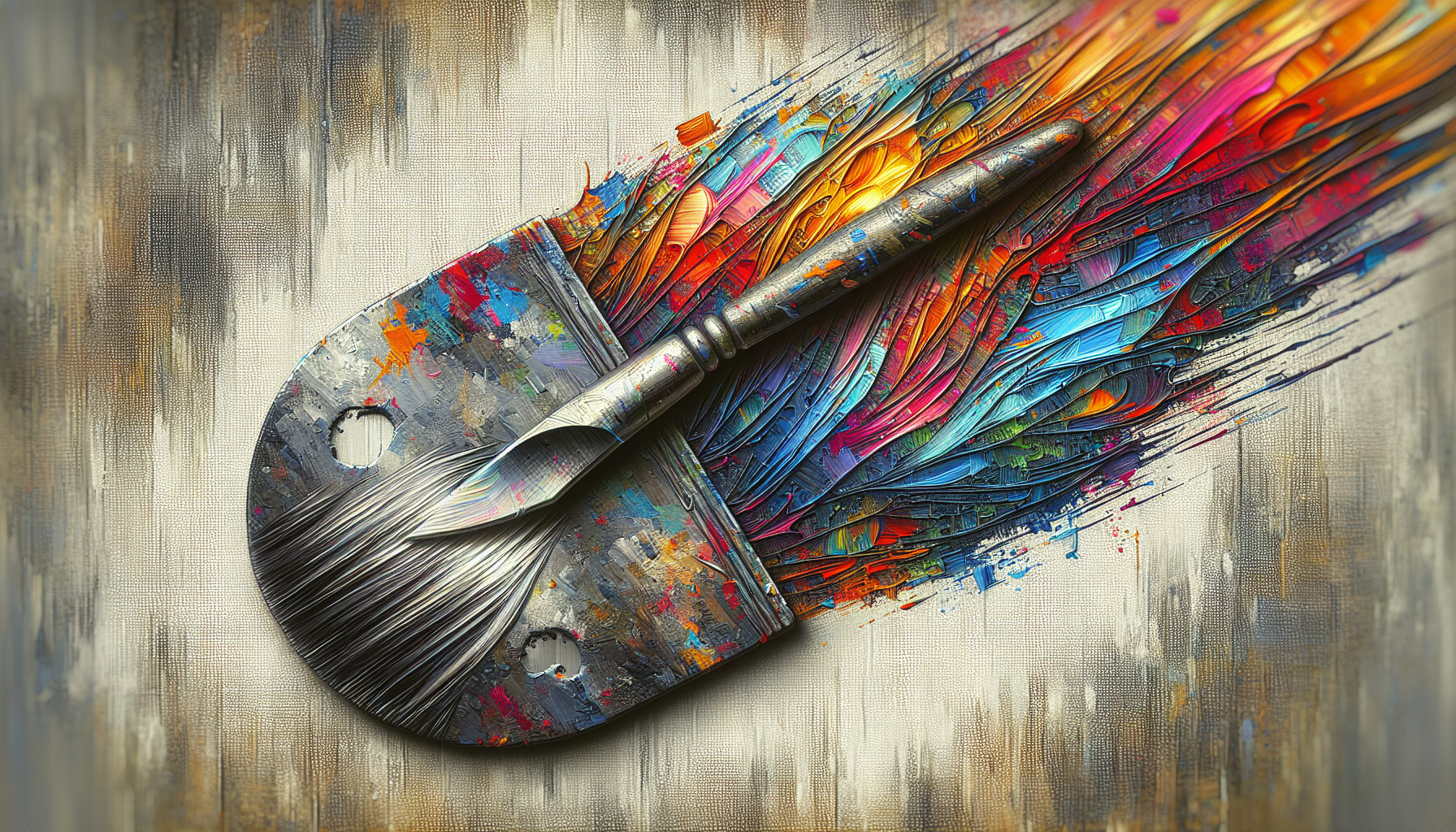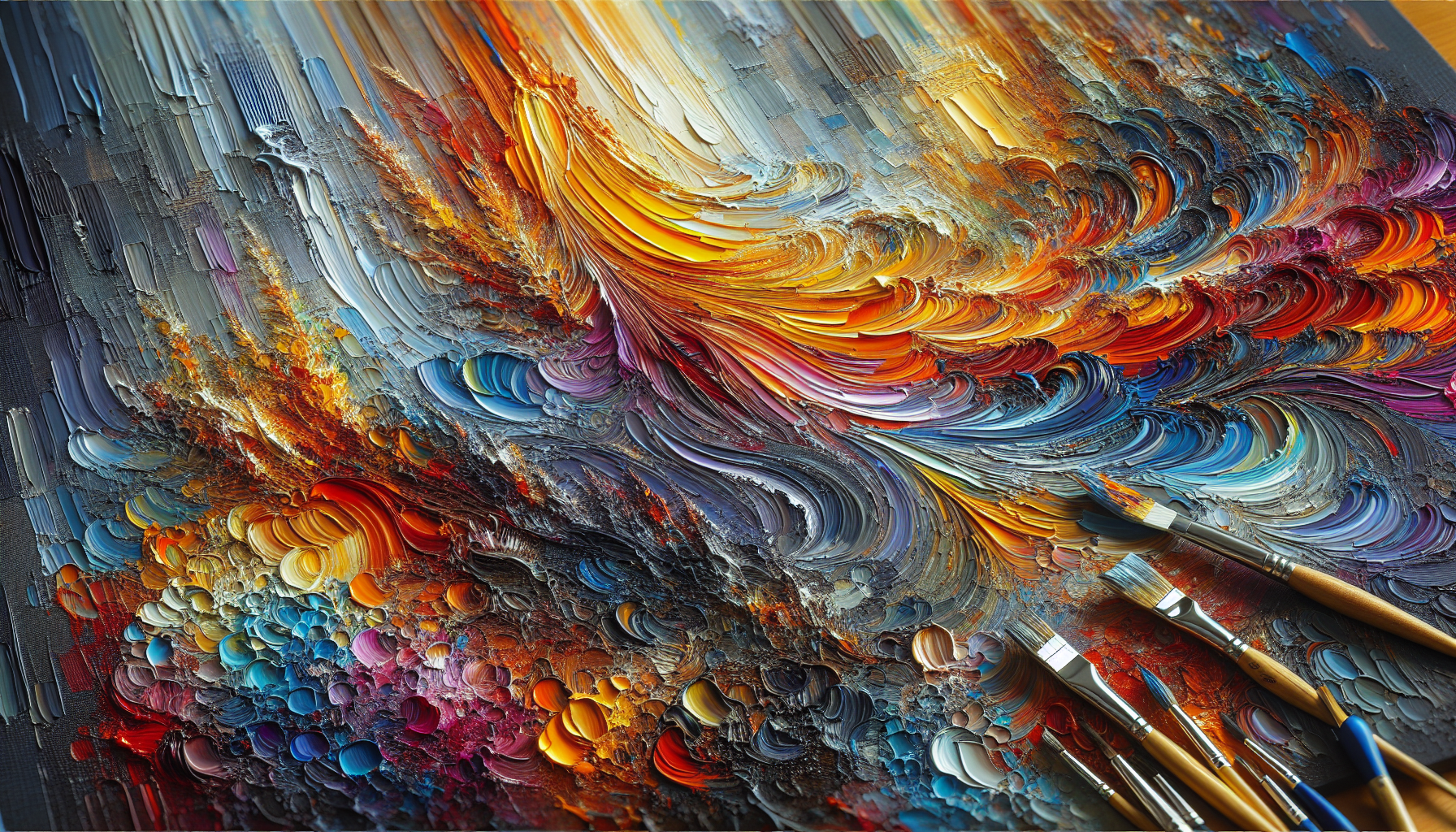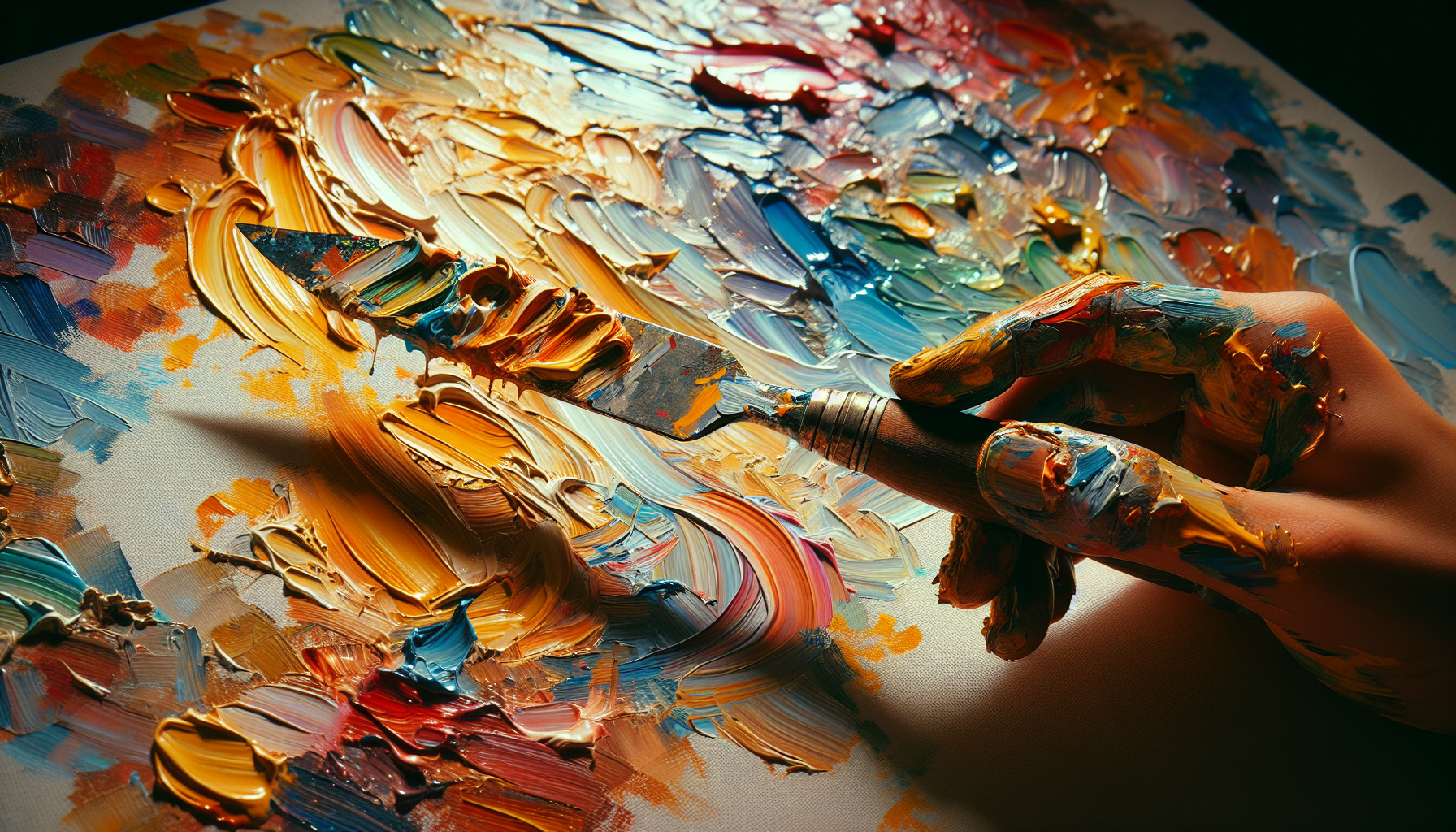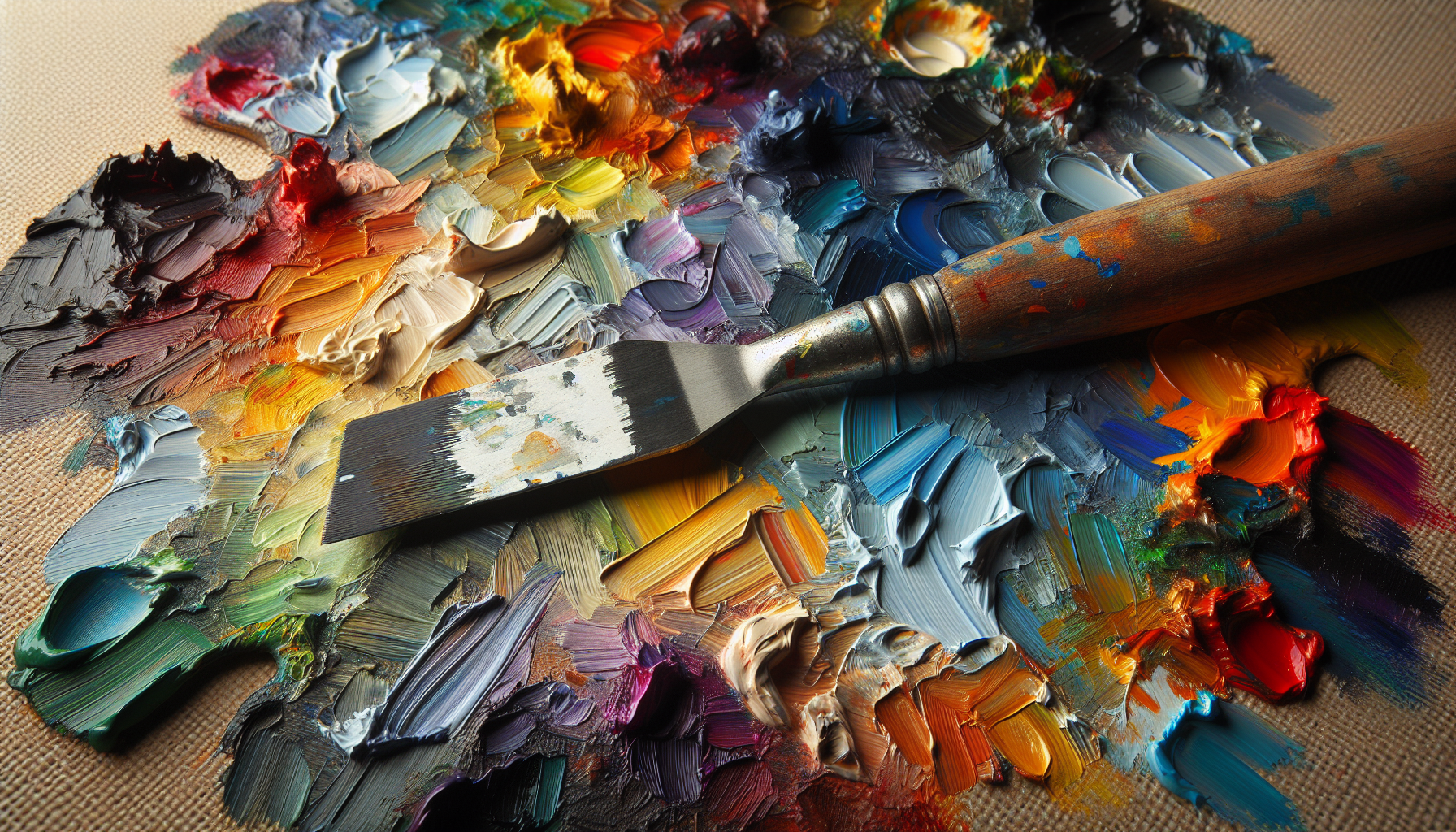Have you ever looked at an acrylic painting and wondered how artists achieve such rich textures and expressive strokes? The secret often lies in a seemingly simple tool: the palette knife. You might initially associate this tool with mixing paints, but its capabilities extend well beyond that. When used skillfully, the palette knife can add depth, energy, and a unique character to your acrylic paintings.
Understanding the Palette Knife
What is a Palette Knife?
A palette knife is a blunt tool with a flexible steel blade, primarily used for mixing paint colors. However, its thin, flexible blade makes it highly effective in application techniques that brushes alone cannot achieve. Unlike a painting knife, which is typically more robust and suited for application of thick paint layers, the palette knife is excellent for both fine details and broad, sweeping gestures.
Types of Palette Knives
Palette knives come in various shapes and sizes, each designed to serve a different purpose. The selection ranges from large angular blades to small, pointed tips. Here’s a brief overview of the different types you might encounter:
| Palette Knife Type | Description |
|---|---|
| Pointed Edge | Ideal for detailed work and fine lines. |
| Rounded Edge | Suitable for broader strokes and softer edges. |
| Offset Knife | Features a bend in the blade for ergonomic handling, reducing hand fatigue over long painting sessions. |
| Straight Edge | Useful for creating bold, straight lines and applying thick layers. |
Advantages of Using a Palette Knife
Texture and Dimension
The palette knife excels in creating textures that are difficult to replicate with brushes. By varying the pressure and angle, you can build up thick layers of paint that add dimension to your work. These textures can catch light in interesting ways, enhancing the visual depth of your piece.
Versatility
Beyond just texturing, palette knives can be used for scraping, spreading, and layering colors. This versatility makes them an indispensable tool for any artist looking to experiment with acrylics. You can create everything from smooth, flat surfaces to rugged, impasto textures.
Quick Cleanup
Unlike brushes, which require meticulous cleaning to maintain their shape and prevent paint buildup, palette knives are relatively easy to clean. A simple wipe with a cloth or paper towel, followed by a rinse, usually suffices. This ease of maintenance makes them a practical option for spontaneous artists who enjoy working quickly.

Techniques to Master
Loading the Knife
Understanding how to properly load your knife with paint is crucial to achieving the desired effect. A tip to consider is not to overload your knife; having too much paint can cause it to spill over the edges and result in unpredictable strokes. Begin by dabbing a small portion of paint onto the blade’s edge and adjust according to the effect you plan to achieve.
Applying Paint
Scraping
One of the most basic techniques, scraping, involves using the edge of the knife to spread paint thinly across the canvas. This technique is perfect for creating backgrounds and subtle transitions between colors.
Smoothing
Smoothing involves using the flat side of the knife to flatten out textures and even the surface. This technique is ideal for blending colors directly on the canvas and creating gradations.
Stippling
This technique uses the tip of the knife to dab small dots or strokes onto the canvas, creating a textured, stippled effect. It’s particularly effective for adding details like foliage or rocky surfaces.
Angle and Pressure
The angle and pressure you apply with the palette knife can drastically change the outcome of your strokes. A steep angle will apply more pressure, spreading the paint thinner, while a shallow angle deposits the paint more thickly. Keep your grip relaxed and adjust the knife’s angle as needed to refine your technique.
Layering Techniques
Layering is a powerful technique that lets you add complexity to your work. By allowing layers to dry between applications, you can build up textures without muddying colors. This method is particularly useful in acrylic painting due to the medium’s fast drying time.
Working in Negative Space
Incorporating negative space effectively in your compositions can enhance the visual balance and intrigue of your artwork. Use the palette knife to scrape away paint, revealing layers beneath and creating contrasts that add to the complexity of your painting.
Practical Tips for Using a Palette Knife
Choose the Right Canvas
A sturdy surface is essential, as palette knife painting often involves applying thick layers of paint that can weigh down your canvas. A heavy-duty canvas or a wooden panel is ideal for supporting such work.
Experiment with Mediums
Acrylic mediums can alter the paint’s properties, including texture, transparency, and drying time. Experiment with gels and pastes to find a consistency that suits your style. Thicker mediums can help hold peaks and texture better when using a palette knife.
Develop Your Style
Palette knife painting offers an opportunity to infuse your personality into your work. Watch and learn from other artists, practice regularly, and continuously strive to develop your unique approach. The more you experiment, the more comfortable you will become, enabling you to explore your creative instincts.

Understanding Mistakes and Corrections
Common Mistakes
- Overloading Paint: Too much paint on the knife can lead to unmanageable strokes and unintended textures, disrupting your composition.
- Inconsistent Pressure: Maintaining consistent pressure ensures uniform strokes and texture.
- Ignoring Layer Drying: Applying wet paint over a wet area can merge layers and create unintended color blends.
Correcting Mistakes
Mistakes in palette knife painting can be corrected rather easily due to the nature of acrylics. Scrape the area gently to remove excess paint if it is still wet. For dry mistakes, simply wait for the layer to dry and paint over the area with new strokes, using the knife to blend seamlessly with the surrounding sections.
Conclusion
Mastering the use of a palette knife in acrylic painting can unlock a world of artistic possibilities, from creating unique textures to expressing dynamic motion. As with any skill, practice is essential, and the journey of understanding how to manipulate this tool will undoubtedly enrich your artistic process. Embrace the capabilities of the palette knife, experiment with different techniques, and most importantly, enjoy the process of bringing your creative visions to life on canvas.



